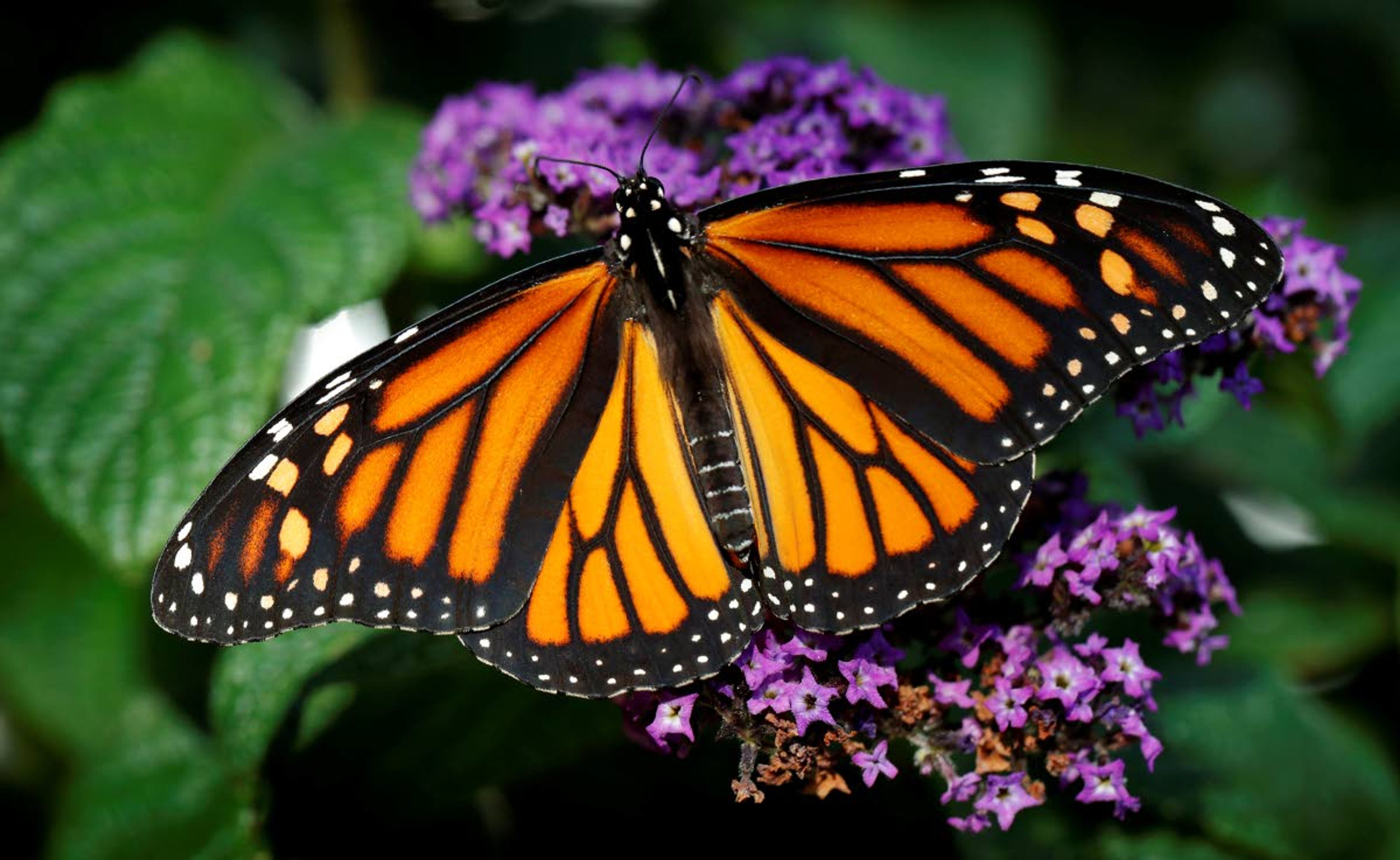Idaho is missing the monarchs
Iconic butterflies are scarce as numbers hit the lowest ever recorded according to report
IDAHO FALLS — Something catastrophically wrong happened in 2018 to monarch butterflies.
Idaho wildlife biologist Ross Winton spent years working with monarch butterflies. With the help of volunteers, he would carefully put a tiny tag the size of a paper hole punch on about 30 to 50 of the iconic insects each summer in the Magic Valley. Then during the summer of 2018 he could only find two to tag.
“I saw two monarchs all season,” Winton said of 2018. “Most of the folks I’ve talked to in the Boise area were seeing very similar results. ... It was a little disconcerting to be seeing that kind of a decline in one year.”
On Thursday, the Xerces Society for Invertebrate Conservation issued a report finding that the population of monarch butterflies overwintering in California had fallen to the lowest level ever recorded, the Post Register reported.
The Western Monarch Thanksgiving Count found only 28,429 butterflies, an 86 percent fall from the previous year and a 99.4 percent decline from numbers counted in the 1980s. Overwintering butterflies in central and Southern California numbered about 4.5 million in the 1980s. The monarch population in the eastern United States, which migrates to Mexico, has declined by more than 80 percent in the past 20 years, but has not suffered the same fall in numbers this year, the Xerces Society says.
“To picture what this means for monarchs, imagine that the population of Los Angeles had shrunk to that of the town of Monterey,” said Emma Pelton, a monarch conservation expert with the Xerces Society. (Monterey, Calif., has about 29,000 residents, while Los Angeles has about 4 million.)
Monarch butterfly experts said much of the blame for the species’ demise can be aimed at habitat destruction, particularly in overwintering areas of California. Each year, the butterflies head south to winter mostly in either California or central Mexico. While most end up in Mexico, particularly those who spend their summers east of the Rocky Mountains, many also overwinter in habitat near Santa Cruz, Calif.
“Our best guess is that most of our Idaho monarchs are going to central and Southern California,” Winton said. “The connections we’ve had that we’ve documented for sure most of them have been from central California. ... They like to winter in a lot of the tall trees along the coast of California.”
But what’s happening in California as far as monarchs are concerned is alarming.
“A lot of the concern is focusing in on California,” said Beth Waterbury, retired wildlife biologist for Idaho Fish and Game in Salmon. Waterbury helped head up a monarch study in Idaho, collecting, tagging and documenting the species especially in eastern Idaho.
“Either loss of habitat or degradation of habitat on those overwinter sites (is key),” she said. “When those butterflies start dispersing in early spring they’re looking for milkweed and nectar resources not too distant from those overwinter sites. The focus right now is looking at availability of habitat in the California central valley or in the coastal foothills or the Sierra foothills and that apparently is lacking. That is looking to be the real break in the migratory chain this past year.”
Winton agrees.
“In California and Mexico a lot of habitat has been lost where they tend to overwinter,” he said. “A lot of those big trees are either getting too old and not getting replaced and blowing over or they are getting removed, with city expansions, things like that. It really comes down to habitat.”
Waterbury said other contributing factors include wildfires, pesticides and hot weather. “Monarchs don’t do well or reproduce when it gets up to 90 degrees or hotter,” she said.
With the population vanishing, the Xerces Society has issued a call to arms in hopes of saving the species.
“It’s easy to give up when faced with news like this,” Pelton said. “But doing nothing is not an option.”
The Xerces Society for Invertebrate Conservation is calling on Californians to plant early blooming flowers and milkweed to fuel migrating monarchs on their paths to other states.
Waterbury said that while most of the action items target California, one involves Idaho. Mainly it involves protecting and restoring monarch-friendly habitat.
“Having done some outreach here in the Salmon area to local ranchers, I taught a course at a cattlemen’s night school in January and gave a presentation on monarchs and honestly the ranchers were kind of dumbfounded,” Waterbury said. “They had no idea that monarchs need (milkweed) to reproduce. Once they knew that they said ‘I can leave some milkweed at the corners of my pivot’ or ‘I don’t need to burn that ditch that time of year.’ They made a few provisions to allow monarch habitat.”
Waterbury said one thing working against the cause is a name.
“This is my name for milkweed, it should be called ‘monarch manna’ because it is so important,” she said. “There are these public attitudes because of the name having the name weed in it. So many people do not know that it is the only plant that monarchs will lay their eggs on.”
Some might wonder what all the fuss is over an insect?
“We want to conserve all of our biodiversity just on its own sake,” Waterbury said. “There is a role that monarchs play that is very important to humans and that is as a pollinator and if we don’t have pollinators on our landscape to pollinate our crops, to pollinate native plants, we’re going to lose about three-quarters of the plant species on this planet and a lot of our food resources.
“Monarchs are kind of a canary in a coal mine for a lot of other insect species, especially bees which are some of our primary pollinators.”
___
More Information
The Xerces Society for Invertebrate Conservation is calling on Californians to plant early blooming flowers and milkweed to fuel migrating monarchs on their paths to other states. Milkweed is the only plant monarchs will lay eggs on. It also has issued a “Western Monarch Call to Action,” which lists five actions to save western monarchs:
. Protecting and managing California overwintering sites.
. Restoring breeding and migratory habitat in California.
. Protecting monarchs and their habitats from pesticides.
. Protecting and restoring summer breeding and fall migration habitat outside of California.
. And answering key research questions about how to best aid monarch recovery. Details on this action list can be found at xerces.org/save-western-monarchs/.
The Xerces Society also offers a suggested list of flowers and shrubs for eastern Idahoans to plant. Go to xerces.org/wp-content/uploads/2016/10/Great_Basin_Monarch_Plant_List_PRINT.pdf.
TNS









